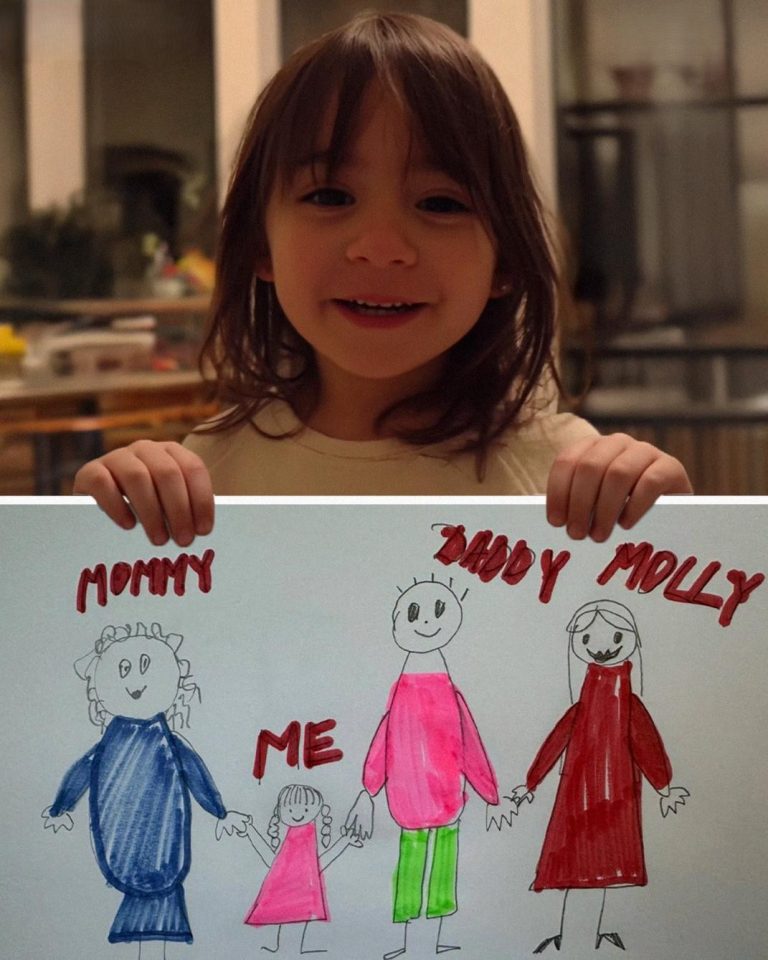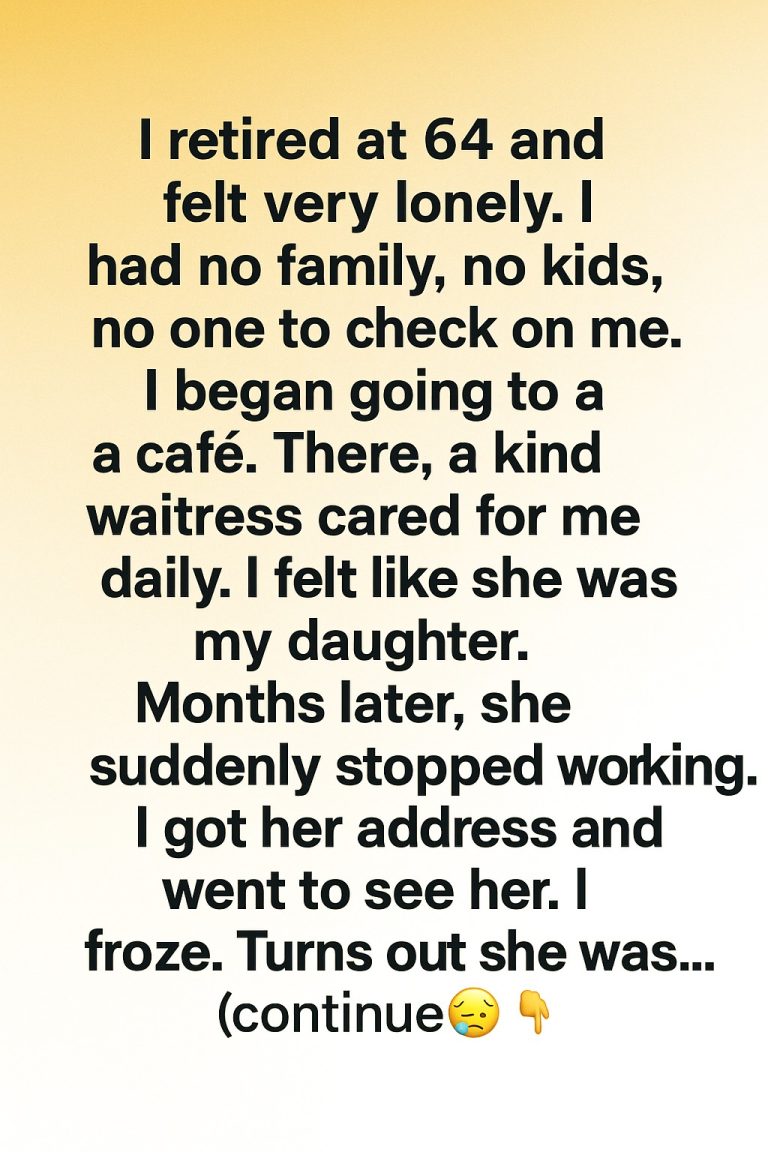
Halloween had always been the most magical time of the year in our house.
I’m a mom of three—Lucas (10), Emma (6), and little Ben (3)—and every October we carved pumpkins, strung orange lights, hung garlands, and blew up an inflatable ghost that bobbed in the front yard. We invited neighbors for a small party, set out candy bowls, and tried to make a little wonderland for the kids. It was our tradition. It was what we did.
This year was no exception. With just a few days left until Halloween, the porch was ready: glowing pumpkins on the steps, a soft halo of orange lights around the railing, and the kids’ inflatable ghost gently swaying in the yard. I’d spent the afternoon tying bows and checking batteries. We went to bed tired and happy, excited for the upcoming party.
The next morning, I stepped out the front door and my nose was assaulted by a sharp, rotten-sweet smell. My heart tightened.
Our pumpkins had been smashed—one after another, their guts oozing out and maggots already beginning to crawl. The inflatable ghost lay deflated and ripped; its seams had been slashed. Garlands had been torn from the railing and strewn across the lawn. Styrofoam gravestones were snapped in half. Everything was scattered into one smelly, disgusting heap of trash.
“Mom! What happened to our decorations?” Lucas shouted from the driveway, already in his sneakers.
Adrenaline replaced my sleepiness. It wasn’t wind or an animal. Someone had come in the night and destroyed our decorations on purpose.
My first thought was vandalism. My second was the thin, private dread parents know when something deliberate happens close to home. Who would do this? Why would anyone take such joy in ruining something that meant so much to three kids?
We started cleaning up, kids trying their best to help, but our hands shook as we picked up soggy pumpkin skins and flattened plastic. That’s when I noticed something shining in the grass—half buried under orange confetti. I crouched and picked it up. A small silver hairpin shaped like a leaf.
Something in my chest tightened. I knew that hairpin.
It belonged to Mrs. Harper—the woman who lived two doors down.
Mrs. Harper had been at odds with us since we moved in. She complained about the noise when we hosted backyard barbecues; she wrote a nasty note after the kids tracked mud onto her sidewalk last spring. She had a reputation among the neighborhood parents for being grumpy and prissy and, frankly, a little territorial. She’d also been the one who’d complained last month when we used string lights that flared into the twilight. She’d said, loudly and with a clipped smile, that she liked “quiet streets and tidy yards.”
The hairpin confirmed what my chest had guessed. I walked straight to her house.
I didn’t march. I don’t do that. I put my face on and my voice steady and knocked on her door.
Mrs. Harper opened the door wearing a floral robe and the same ladylike scowl she always did, as if she’d expected me. For a second she looked embarrassed—then annoyed. “Yes?” she said.
“Did you happen to find a hairpin in our yard this morning?” I asked, holding up the silver leaf. “It looks like one of yours.”
Her eyes flicked to it, then away like a child hiding a lie. “Why, yes, I—” she began.
Before she could finish, Lucas tugged on my sleeve. “Mom, look,” he whispered. Through the living-room window I could see a motion behind the sofa—someone moving quickly. A second later a small, hunched figure slipped out the back door.
My stomach lurched. Mrs. Harper’s face went pale. “You should be careful,” she said too quickly. “Anyone could—”
I didn’t let her finish. I stepped inside and called, “Mrs. Harper? Did you have anyone over last night? Maybe a friend who doesn’t like Halloween?”
She hesitated, then sputtered, “No! I would never—” Her voice fell. She was suddenly on the defensive in a way that made me feel like I was trespassing.
The back yard gate slammed. I stepped out to the little courtyard and looked down the alley between our houses. A lawn chair was knocked over. A bit of orange ribbon snagged on a bush. Linda—one of the neighborhood moms—came down the sidewalk, phone in hand, saying she’d seen something odd at midnight when she walked her dog. She’d seen “a silhouette carrying something.”
“Who was there?” I demanded.
Mrs. Harper’s composure finally cracked. She sagged into her porch chair and folded her hands. “I didn’t—well, I told you my granddaughter, Ava, stayed over after dinner. She’s impulsive. She’s been heartbroken because she didn’t get invited to a party, and—she’s been acting out.” Her voice dropped to a whisper. “She’s been throwing tantrums.”
Ava. The neighbor kid. The one who always stared at Emma on the bus, who’d been shunted to the sidelines by older kids. The quiet one. The sensitive one.
I sat down heavily. If Ava had done this, why? To hurt us? To make a statement? To get back at kids who didn’t include her? The motive slid into place like a puzzle piece: anger, exclusion, a hunger to be seen.
“I’m sorry,” Mrs. Harper said, her voice small. “She’s been so lonely since her parents split. I thought I could keep an eye on her, but she slipped out after midnight. I was asleep.”
“Why would she do this?” I asked. “Why the decorations? Why pumpkins? That’s not just taking; it’s mean.”
Mrs. Harper folded her hands tighter. “She told me last week that your kids had a big display and that no one ever invites her to anything. She’s been hurt. I told her to talk to you, that it’s not the… the way. But she didn’t listen. I should’ve kept the door locked. I didn’t think she would—”
At that moment little Ben, who’d been collecting pumpkin seeds, held up his hand and said, very quietly, “Mom, maybe she wanted us to see how bad she felt.” His voice was softer than the morning. “Maybe she wanted us to notice her.”
I looked at my son and realized how precariously close we were to a spiral none of us intended. The scene shifted for me: not just vandalism, but a cry for connection. Angry children lash out. Hurt people hurt others. That doesn’t excuse the actions, but it reframes them.
I stood up. There would be consequences—Ava would have to help fix what she’d ruined. She’d face the parents, apologize, and make amends. That was non-negotiable. But punishment without repair wouldn’t heal anything.
I walked the kids back to the yard. I picked up a shattered pumpkin and handed a piece of orange flesh to Ava’s grandmother. “She needs to make this right,” I said. “She needs to see what this felt like for my kids. And she needs to learn that if she’s hurting, she can tell someone who’ll listen.”
Mrs. Harper nodded and phoned the house. Pretty soon Ava shuffled out, hair mussed, eyes red. She clung to her grandmother but looked at the ground like someone who expected to be hated. I saw in her face the sort of shame that teaches better than scolding: the recognition that her actions had real people attached to them.
We did the practical things first. Ava and I and my three kids spent the rest of the day cleaning up. She helped me scoop seeds, line up salvageable pumpkin shells for compost, staple ribbons back onto garlands, and patch the ripped ghost. She apologized, not in the scripted way adults sometimes force children to do, but through actions—patient, humble work.
Then we sat on the stoop with hot chocolate. I asked her about the party she missed, and she told me—small, halting sentences—about being left out, about watching other kids laugh without her. She blamed herself; she blamed them; she blamed everything. She didn’t know how to ask to be included.
The kids listened. Lucas offered to show a simple magic trick to teach her how to break the ice. Emma suggested they make a “Welcome” sign together and leave it on the bus stop. Ben hugged her, small and surprising, like a bridge.
By evening, the inflatable ghost still bore a stitch where we’d mended it, and the yard smelled faintly of pumpkin and detergent instead of rot. It wasn’t perfect, but we’d made a start.
Mrs. Harper apologized, too, for not watching her granddaughter and for being too quick to assume the worst of our family. We didn’t exchange friendships, but we exchanged a fragile truce.
The shock for me wasn’t only that my decorations had been destroyed. It was realizing how quickly I’d judged, and how little I knew about the small, private struggles behind neighborly faces. It was a lesson in seeing behavior as a symptom more than a sin.
On Halloween night we still had our party. It was smaller than planned; a few neighbors didn’t come. But Ava was there—quietly, awkwardly, holding a paper “Welcome” sign—and for the first time that October she was included in laughter that wasn’t aimed at her. She helped the kids bob for apples and handed out candy with sticky, guilty hands that shook.
Did everything fix itself that night? Of course not. There would be follow-ups—talks with parents, restored decorations (we borrowed an inflatable ghost from another neighbor), and conversations about feelings and boundaries. But what happened taught my kids something far more important than whether a pumpkin survives the night. They learned that being quick to judge is easy, and making space for people’s hurt is harder—and more necessary.
And that silver hairpin? Mrs. Harper kept it in her pocket after that day. She said, simply, “It reminded me I needed to be paying attention.”
If you’d asked me that morning whether I was ready to forgive whoever destroyed our Halloween, I’d have said no. By dusk, my answer had changed. There are consequences for doing harm, yes—but there’s also the hard, healing work of turning destruction into repair, and loneliness into inclusion.
Sometimes the worst mess leads to the best lesson.



